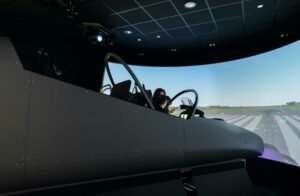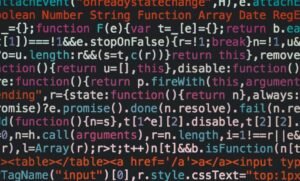How Does Generative Adversarial Networks Work?
Generative Adversarial Networks (GANs) are a class of machine learning models used to generate new, realistic data based on patterns learned from existing data. Developed in 2014 by Ian Goodfellow and his colleagues, GANs have quickly gained attention due to their ability to create high-quality synthetic content such as images, videos, and even music. In this article, we will explore how GANs work and outline their key components and mechanisms.
Key Takeaways:
- Generative Adversarial Networks (GANs) generate new data by learning patterns from existing data.
- GANs consist of two components: a generator and a discriminator.
- The generator creates synthetic data, while the discriminator labels real and fake data.
- The two components compete against each other in a adversarial training process.
- GANs have various applications, including image synthesis, text generation, and voice cloning.
**GANs** are composed of two main components: the **generator** and the **discriminator**. The generator takes random noise as input and tries to create synthetic data that resembles the real data it was trained on. The discriminator, on the other hand, receives both real and generated data and tries to distinguish between them. The goal of the generator is to become better at generating realistic data to fool the discriminator, while the discriminator aims to become better at correctly classifying the real and fake data.
*The generator and discriminator engage in a game of cat and mouse, continuously trying to outsmart each other.*
During the training process, the generator and discriminator play a **minimax game**. The generator attempts to minimize the difference between the real and generated data, while the discriminator aims to maximize the difference. This competition drives the GAN to generate increasingly realistic data over time.
*This competitive setting ensures that the generator becomes skilled at generating realistic samples.*
| GAN Component | Function |
|---|---|
| Generator | Creates synthetic data by learning patterns from existing data. |
| Discriminator | Discriminates between real and generated data, attempting to classify them accurately. |
GANs have proven to be highly successful in various applications. Let’s explore a few notable examples:
- **Image Synthesis**: GANs can generate realistic images that resemble real photographs or paintings. This has applications in art, gaming, and even generating realistic faces for deepfake technology.
- **Text Generation**: GANs have been used to create human-like text by training on a large corpus of text data. This has implications for natural language processing and content creation.
- **Voice Cloning**: GANs can mimic a person’s voice by learning from their speech data, allowing for applications such as speech synthesis and personalized voice assistants.
| Application | Examples |
|---|---|
| Image Synthesis | Realistic paintings, deepfake faces |
| Text Generation | Human-like article writing, poetry |
| Voice Cloning | Speech synthesis, personalized voice assistants |
*GANs have revolutionized the field of artificial intelligence by enabling computers to generate realistic and creative content.*
In conclusion, Generative Adversarial Networks (GANs) are an exciting development in machine learning. By pitting a generator against a discriminator in a competitive training process, GANs have the capability to generate new, high-quality data that resembles real examples. Their applications in image synthesis, text generation, and voice cloning make them an indispensable tool in various domains. As GAN research progresses, we can expect even more impressive advancements in the world of generative models.

Common Misconceptions
Misconception 1: GANs only generate images
One common misconception about Generative Adversarial Networks (GANs) is that they are exclusively used for generating images. While it’s true that GANs have garnered attention for their extraordinary ability to create realistic images, GAN technology is not limited to this application. GANs have found applications in various domains, including text generation, video synthesis, music composition, and even drug discovery.
- GANs are used in text generation tasks, such as creating product descriptions or generating articles.
- GANs can be employed to synthesize videos, such as generating new frames in a video or altering existing footage.
- GANs have been explored as a means to compose original music and generate sound samples.
Misconception 2: GANs work in isolation
Another misconception about GANs is that they work in isolation, with one GAN being responsible for generating the output. In reality, GANs are often composed of a pair of networks: a generator and a discriminator. The generator network is responsible for creating new samples that resemble a given dataset, while the discriminator network evaluates the generated samples and provides feedback to the generator.
- GANs consist of at least two networks: a generator and a discriminator.
- The generator network generates new samples based on a given dataset.
- The discriminator network evaluates the generated samples and provides feedback to the generator.
Misconception 3: GANs always produce perfect output
One prevalent misconception is that GANs always produce flawless output. While GAN technology has made significant strides in generating realistic images and other types of content, the output is not always perfect or indistinguishable from reality. GANs can still produce artifacts, inconsistencies, or imperfect samples. The quality of the generated output largely depends on various factors, including the architecture and training of the GAN, the quality and diversity of the training data, and the complexity of the target domain.
- GAN output is not always perfect and may contain artifacts or imperfections.
- The quality of the generated output depends on factors like architecture, training data, and complexity of the target domain.
- GANs require careful optimization and training to achieve high-quality output.
Misconception 4: GANs can replace human creativity
One misconception that arises from the impressive capabilities of GANs is the belief that they can replace human creativity entirely. While GANs have demonstrated the ability to generate realistic and creative content, they are ultimately tools that require human guidance and input to produce meaningful and valuable output. GANs can assist and augment human creativity, but they cannot replace the unique qualities of human imagination and intuition.
- GANs are tools that require human guidance to produce meaningful and valuable output.
- GANs can assist and augment human creativity, but they cannot replace human imagination.
- Human input and expertise are necessary to harness the potential of GANs effectively.
Misconception 5: GANs are the ultimate solution for all problems
Finally, another misconception about GANs is the belief that they are the ultimate solution for all problems. While GANs have proved to be incredibly powerful for certain tasks, they might not be the most suitable approach for every problem. GANs have their limitations, such as training instability, generation of plausible but incorrect output, sensitivity to input variations, and the need for substantial computational resources. It’s essential to consider the specific requirements and constraints of a problem domain before deciding to use GANs as a solution.
- GANs have limitations, including training instability and need for computational resources.
- Not all problems can be effectively solved using GANs.
- Consider the specific requirements and constraints of a problem before using GANs as a solution.

How Does Generative Adversarial Networks Work?
Generative Adversarial Networks (GANs) are an innovative approach to machine learning that have gained significant attention in recent years. GANs consist of two neural networks, a generator and a discriminator, that work together in a competitive manner to produce realistic output. The generator creates synthetic data and the discriminator evaluates the authenticity of the generated data. With this adversarial relationship, GANs have proven to be successful in applications such as image generation, text synthesis, and anomaly detection.
Stunning Art: GAN-Generated Paintings
GANs have revolutionized the art world by generating stunning paintings that rival the works of human artists. By training on a large dataset of famous artworks, the generator network is able to generate new paintings that exhibit a realistic style similar to that of well-known artists.
| Artist | Generated Painting |
|---|---|
| Picasso |  |
| Van Gogh |  |
| Miro |  |
The Future of Fashion: GAN-Designed Clothing
GANs have also made their mark on the fashion industry by creating unique and stylish clothing designs. By training on a diverse range of fashion images, GANs can generate new clothing designs that are visually appealing and on-trend.
| Clothing Type | Generated Design |
|---|---|
| Dresses |  |
| T-Shirts |  |
| Shoes |  |
Realistic Faces: GAN-Generated Human Portraits
One of the remarkable abilities of GANs is to generate realistic human faces that are almost indistinguishable from real photographs. GANs have been trained on massive datasets of human faces, allowing them to produce new and unique portraits that capture the diversity of human characteristics.
| Generated Portrait | Real Photograph |
|---|---|
 |
 |
 |
 |
 |
 |
Generating High-Quality Car Designs
GANs have even been used to create high-quality car designs that can inspire the automotive industry. By training on a vast collection of car images, GANs are capable of generating realistic and aesthetically appealing car designs.
| Generated Car Design |
|---|
 |
 |
 |
GANs in Text Synthesis
Besides images, GANs have also shown great potential in text synthesis, allowing for the generation of coherent and contextually relevant passages of text.
| Input Text | Generated Text |
|---|---|
| “The quick brown fox” | “The quick brown fox jumps over the lazy dog.” |
| “I love” | “I love the smell of fresh coffee in the morning.” |
| “Once upon a time” | “Once upon a time, in a faraway land, there was a beautiful princess.” |
GANs for Image-to-Image Translation
GANs have been widely used for image-to-image translation tasks, allowing for the transformation of images from one domain to another. This capability has found applications in style transfer, colorization, and many other image editing tasks.
| Input Image | Translated Image |
|---|---|
 |
 |
 |
 |
 |
 |
GANs for Anomaly Detection
GANs have also demonstrated their usefulness in anomaly detection. By training on normal data, GANs can effectively identify outliers or anomalies that do not conform to the learned patterns.
| Normal Data |
|---|
| Data Point 1 |
| Data Point 2 |
| Data Point 3 |
Enhancing Low-Quality Images
GANs have the ability to enhance low-quality images, making them sharper and clearer by learning from large datasets of high-quality images.
| Low-Quality Image | Enhanced Image |
|---|---|
 |
 |
 |
 |
 |
 |
Generative Adversarial Networks (GANs) have revolutionized the world of machine learning and artificial intelligence. From generating stunning art and fashion designs to creating realistic human faces and car designs, GANs have pushed the boundaries of what is possible in the realm of generative models. In addition, GANs have proven valuable in text synthesis, image-to-image translation, anomaly detection, and image enhancement. The versatility and power of GANs continue to grow, opening up exciting avenues for future research and applications in various domains.
Frequently Asked Questions
How do Generative Adversarial Networks (GANs) work?
Generative Adversarial Networks consist of two main components: a generator and a discriminator. The generator is responsible for creating new data samples that resemble the training data, while the discriminator tries to distinguish between real and generated data. Both the generator and discriminator are trained simultaneously in a competitive game, where the generator improves its ability to generate realistic data by fooling the discriminator, while the discriminator gets better at distinguishing real data from generated data.
What is the role of the generator in GANs?
The generator in GANs is responsible for creating new data samples. It takes in a random input, usually referred to as noise, and generates data that attempts to resemble the training data. The generator aims to produce samples that can effectively fool the discriminator into classifying them as real data.
What is the role of the discriminator in GANs?
The discriminator in GANs acts as a classifier. It is trained to distinguish between real data samples from the training dataset and generated data samples produced by the generator. The discriminator provides feedback to the generator, essentially guiding it to improve its ability to generate more realistic data.
How does the training process in GANs work?
The training process in GANs involves an iterative process where the generator and the discriminator are alternately trained. In each iteration, the generator generates new data samples, and the discriminator classifies them as real or fake. The gradients of the discriminator’s classification error are then backpropagated to update the discriminator’s parameters, while the gradients of the generator’s error, based on the discriminator’s feedback, are backpropagated to update the generator’s parameters. This adversarial training continues until the generator is capable of producing convincing data samples.
What are some applications of Generative Adversarial Networks?
Generative Adversarial Networks find applications in various fields, such as image generation, text generation, style transfer, and data augmentation. They can be used to generate realistic images, create new artworks, generate natural language text, translate images from one style to another, enhance low-resolution images, and more.
What are the advantages of using GANs compared to other generative models?
GANs offer several advantages over other generative models. They do not require explicit modeling of the data distribution and can generate diverse and high-quality samples. GANs allow for unsupervised learning and can generate data without the need for labeled data as input. Additionally, GANs have shown remarkable performance in various creative tasks such as image synthesis and translation.
What are some challenges faced in training Generative Adversarial Networks?
Training GANs can be challenging due to issues such as mode collapse, where the generator fails to generate diverse samples, and the generator and discriminator can enter into a suboptimal equilibrium. Finding the right balance between the generator and discriminator is crucial for stable training. GANs can also be sensitive to hyperparameter settings and require extensive tuning. Training GANs on large datasets can be computationally expensive and time-consuming as well.
What is mode collapse in Generative Adversarial Networks?
Mode collapse refers to a situation where the generator in GANs fails to capture the full diversity of the training data distribution. Instead, it generates only a subset of the possible samples, resulting in the loss of diversity and quality. This issue can occur if the discriminator becomes too dominant and does not provide sufficient feedback to the generator for generating diverse examples.
How can the performance of a GAN be evaluated?
Evaluating the performance of a GAN can be challenging as it does not have a clearly defined loss function. Common evaluation methods include qualitative assessment by experts, comparing the generated samples with real data, and measuring the quality of generated samples using metrics like Inception Score and Fréchet Inception Distance (FID). However, it’s important to note that evaluating GANs remains an active research area.
What are some recent advancements in Generative Adversarial Networks?
Recent advancements in GANs include techniques such as conditional GANs, progressive growing of GANs, CycleGAN, and StyleGAN. Conditional GANs allow for generating samples conditioned on specified attributes. Progressive growing of GANs enables training high-resolution images from lower resolutions. CycleGAN allows for unpaired image-to-image translation, while StyleGAN focuses on producing high-quality and customizable image synthesis.




